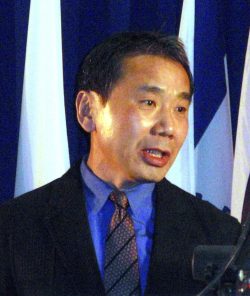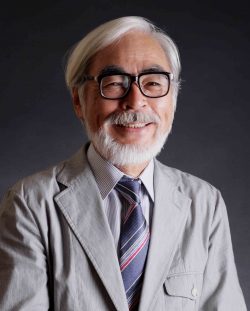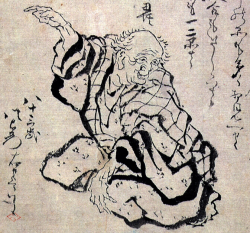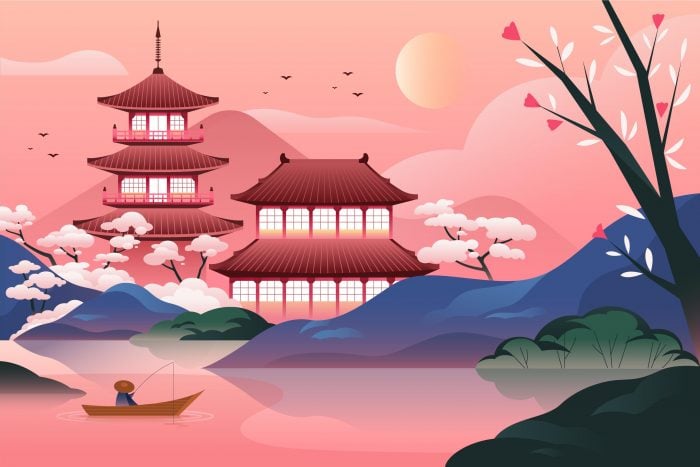Meet 3 Life-Enriching Japanese Artists
Every time we see a Japanese painting or watch an anime movie, we are struck by the feeling of witnessing something profoundly beautiful and somewhat mystifying at the same time. We appreciate the beauty of the art without ever feeling that we can completely understand it. The main reason why this happens is that Japanese art comprises a set of ancient ideals that are very different from Western values.
Whereas the Western classical arts were dominated by symmetry and ideal proportion. Japanese aesthetics have always been drawn to the Wabi-Sabi of things. Wabi-Sabi is a Japanese term that refers to the beauty of everything that is fragile and impermanent, a way of seeing the world that favours imperfection, melancholy and subtlety over strength and flawlessness.
The work of great Japanese artists, then, is striking not only because it’s technically impressive, but because it gives us a glimpse into a different way of experiencing the world. For this reason, we have decided to make a list of some of the most interesting Japanese artists working today.
Haruki Murakami

Photo by Galoren.com via Wikimedia
Murakami is one of the best-selling Japanese authors in the world. His novels and short stories explore the surreal or melancholic side of life, and his characters are often lonely, alienated people who try to make sense of the world around them. His first novel, Hear the Wind Sing, encompasses all the traits that readers associate with his best work. It’s a plot-thin, character-driven story told through agile, simple prose that seems to float in the air like a familiar smell. The nameless protagonist reminisces, muses about the meaning of love while trying to understand how he came to lose his youth and hopes for a better future.
A unique feature of Murakami’s writing style is the inclusion of commentary from his heroes on how strange their own stories are, and what unexpected turns they’re taking. It’s a huge achievement from Murakami, who is able to imbue his characters with this awareness of their own artifice while making them feel 100% real and human.
Since all of Murakami’s books have been translated into dozens of languages, Japanese enthusiasts could buy his novels in both Japanese and their own language and compare both versions to learn new expressions.
Hayao Miyazaki

Photo by 大臣官房人事課 via Wikimedia
Have you seen My Neighbour Totoro? What about Spirited Away or The Tale of Princess Kaguya? Then you know who we are talking about.
Hayao Miyazaki is a Japanese author, animator, filmmaker, manga artist, and co-founder of the legendary Studio Ghibli, one of the most prestigious film production companies in the world. His films present recurring themes such as the relationship between human beings and the natural world, the wholesomeness of living a quiet, rural existence, and the hardships of being a pacifist in a world dominated by war.
In his 1988 masterpiece Grave of the Fireflies, a devastating animated war tragedy inspired by a true story, Miyazaki follows the adventures of two siblings, Seita and Setsuko, and their desperate fight to survive during the final stage of the Second World War. What sets Ghibli’s work apart is that their movies are not just masterfully told, but also beautifully animated. Any shot from a film directed by Miyazaki is a breathtaking watercolour painting that you would expect to find in one of the most important museums in the world.
Fortunately for film and language lovers, Netflix has recently added most Ghibli films to its catalogue, which means that you can watch the movies in their original language with English subtitles and familiarise yourself with the sounds of this wonderful language.
Katsushika Hokusai

Selfportrait of Hokusai Katsushika at the age of eighty-three via Wikimedia.
Katsushika Hokusai, widely known as Hokusai, was a Japanese artist, painter and printmaker of the Edo movement. His most celebrated work, which consists of a woodblock print series named Thirty-six Views of Mount Fuji, which includes the internationally famous image, The Great Wave off Kanagawa, one of the most recognisable and iconic pictorial representations of Japan.
The image shows a gigantic, threatening wave looming over three small boats in the sea of the Sagami Bay, while Mount Fuji rises timidly in the background against a cloudy sky. Though some historians and art critics have pointed out that the wave might be a tsunami, according to most experts on Hokusai’s work the Great Wave is just a visual metaphor of mortality and the unpredictability of danger.
Though there isn’t much material in Japanese about Hokusai on YouTube, language and art enthusiasts can learn all about his life and artistic work thanks to a new biopic called HOKUSAI, which follows his struggle to be recognised as an artist.
Which of these amazing Japanese artists will you explore first? We’re sure that, no matter where you start, you will be enriched after you’ve finished.
If you want to learn Japanese to discuss Japanese artists in their own language, we suggest you take a course with a native teacher. Unlike foreign tutors, native teachers will be able not only to teach you the language but also to tell you everything you’ve always wanted to know about Japanese culture.

